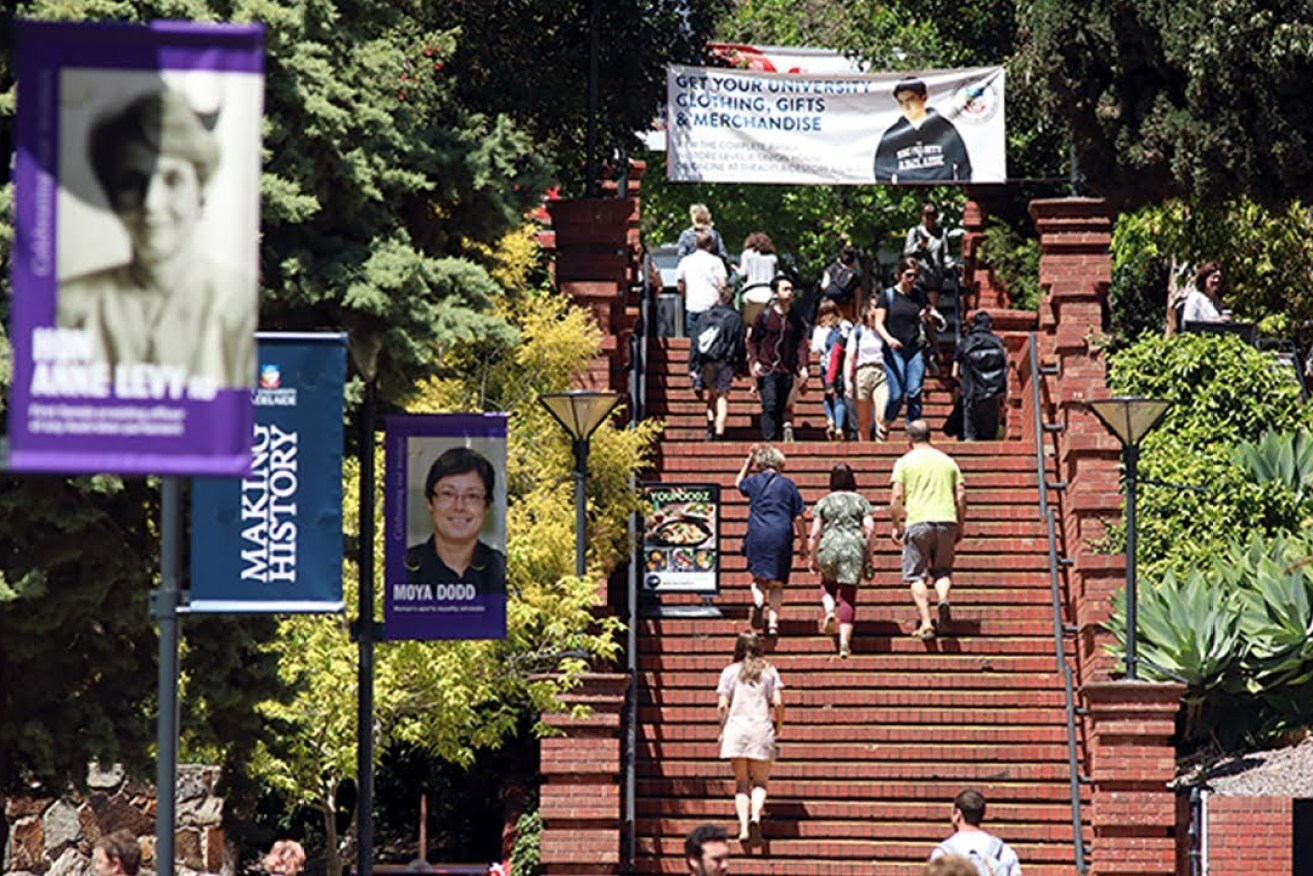International students slow to return despite border reopening
International students are still facing hurdles to their arrival in South Australia just weeks before classes return, including cancelled flights and concerns about Omicron in Adelaide.

Photo: Tony Lewis/InDaily
With orientation week at Adelaide’s major universities underway from February 21, international student numbers remain a long way off pre-pandemic norms despite the reopening of borders.
As of 1 January 2022, fully vaccinated international travellers arriving into Adelaide are now only required to take PCR COVID-19 tests before and after they arrive.
From November 2021 to January this year, a total of 56,000 international students arrived in Australia, but that remains well below pre-pandemic levels, when there were 91,250 student arrivals in January 2020 alone.
University of Adelaide Deputy Vice-Chancellor of external engagement Dr Jessica Gallagher told InDaily enrolments have not yet returned to pre-pandemic levels.
“While commencing enrolments are exceeding expectations, they are also in decline this year, and continuing enrolment is static,” Gallagher said.
“Based on current international enrolments the University is on course to be down roughly 20 per cent from 2019-2020 levels. Overall, this is in line with expectations.”
Council of International Students Australia National President Oscar Zi Shao Ong said that even though the borders have reopened, students face a range of other barriers.
Ong, who is from Malaysia and is president of the Adelaide University Union, said flight cancellations and the escalation of the pandemic in South Australia had made it difficult for students to return.
“There is limited flight availability, I know for instance Malaysian airlines have been cancelling flights to SA,” he said.
“Omicron in Australia is also a concern — there are Chinese students who are anxious about coming back with that being the case. They are also celebrating Chinese New Year right now, and are wanting to give a bit more time with family — COVID has been a hard time for everybody.”
Ong said the Council of International Students Australia is pushing for universities to continue to provide the same level of flexibility for students as when borders were closed.
He said many would arrive after the academic year commences and some would prefer to continue with online learning.
“It’s going to be a staggered return, it’s a very disruptive situation for international students,” he said. “It’s a daunting few weeks for students when they arrive, getting their bank account sorted, accommodation, getting a TV, so we’ll be advocating for flexibility.”
Flinders University’s vice president international Sebastian Raneskold told InDaily that although he expected international student numbers to be healthier than 2021, there’s still “considerable pandemic-related uncertainty and numbers are changing daily.”
“Not only are we seeing interest from new students, but importantly, our existing students whose studies have been hanging in the balance are filled with fresh optimism that they’ll be able to achieve the practicals and work placements critical to complete their degrees,” Raneskold said.
“Whilst the outlook is positive with offers about 25 per cent higher than this time last year there’s still a way to go before the sector truly recovers.”
The Adelaide-based treasurer of the Student Accommodation Association Paul Tosch told InDaily that although there was an uptick in demand for student housing, the market remains “a long way” from pre-pandemic occupancy levels.
“It’s been very tough for international student accommodation — we adhere to such strict standards, and it’s hard because these communities are geared towards students, and you can’t just pivot from that,” he said.
“We think the floodgates will open in 2023, it’s a slow build back to what was a fantastic industry.”
The emptying of international student accommodation has in turn had flow-on effects for the economies of surrounding neighbourhoods — particularly in the CBD.
A Mitchell Institute study in 2021 found that of an estimated 3,690 international students absent from South Australia due to the pandemic by October 2020, 1,510 would have been living in Adelaide’s city centre.
The study forecast that a third academic year of no international students would have cost Australia about $20 billion a year, with most of the losses outside the education sector in the broader economy.
International education was SA’s largest export prior to the pandemic, worth $2.2 billion to the state in 2019.
UniSA told InDaily international students were returning to the university, but declined to provide numbers.
“Over the past two years, UniSA has had thousands of international students waiting to travel and study here,” a UniSA spokesperson told InDaily.
“Since the border opened to student visa holders, we have had a very strong response from these students.”
To make Australia more attractive as a study destination and address workforce shortages, the federal government temporarily relaxed student visa work limits and is offering refunds on visa application charges.
The Australian Trade and Investment Commission is additionally running an advertising campaign to attract more international students.




